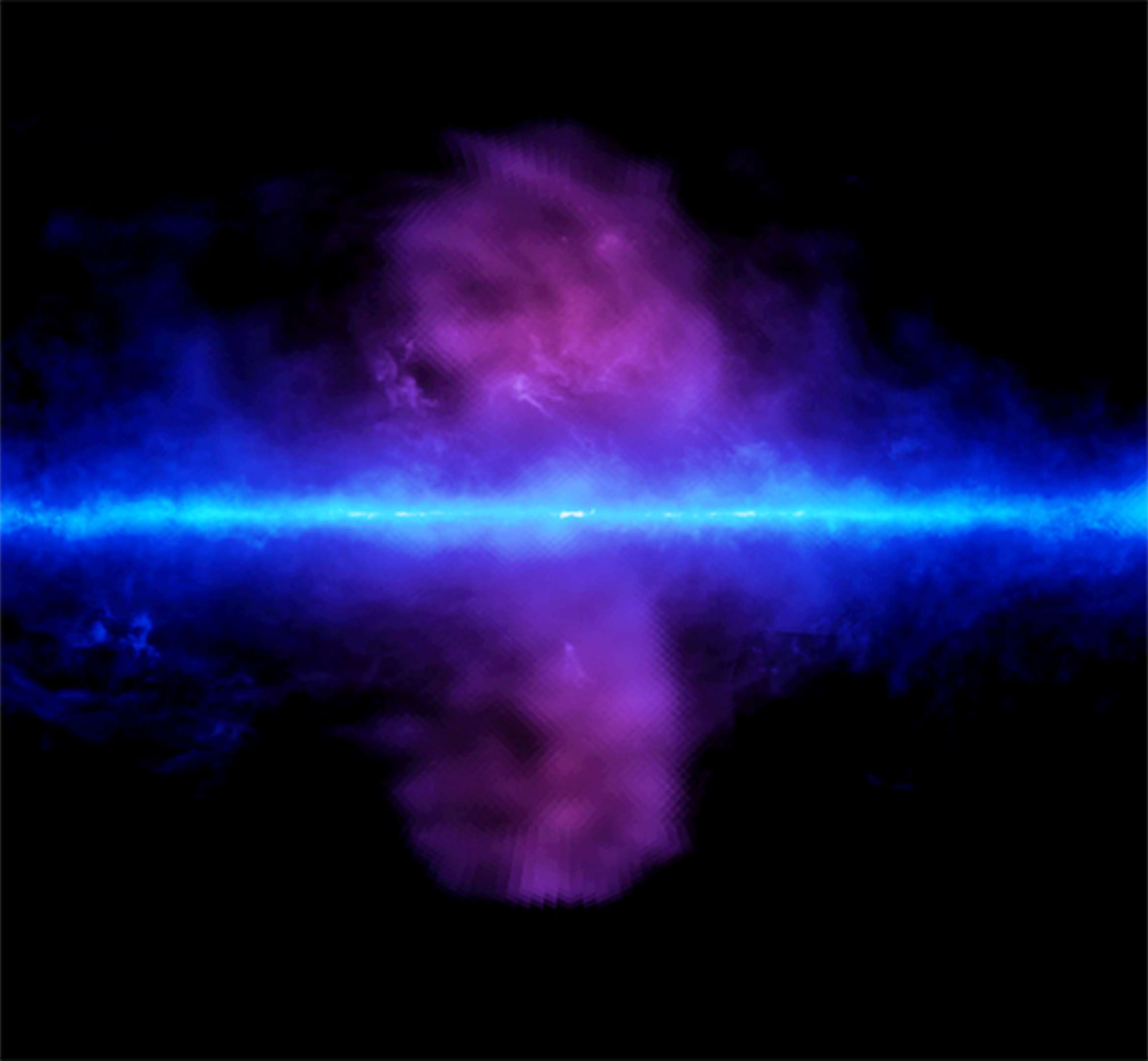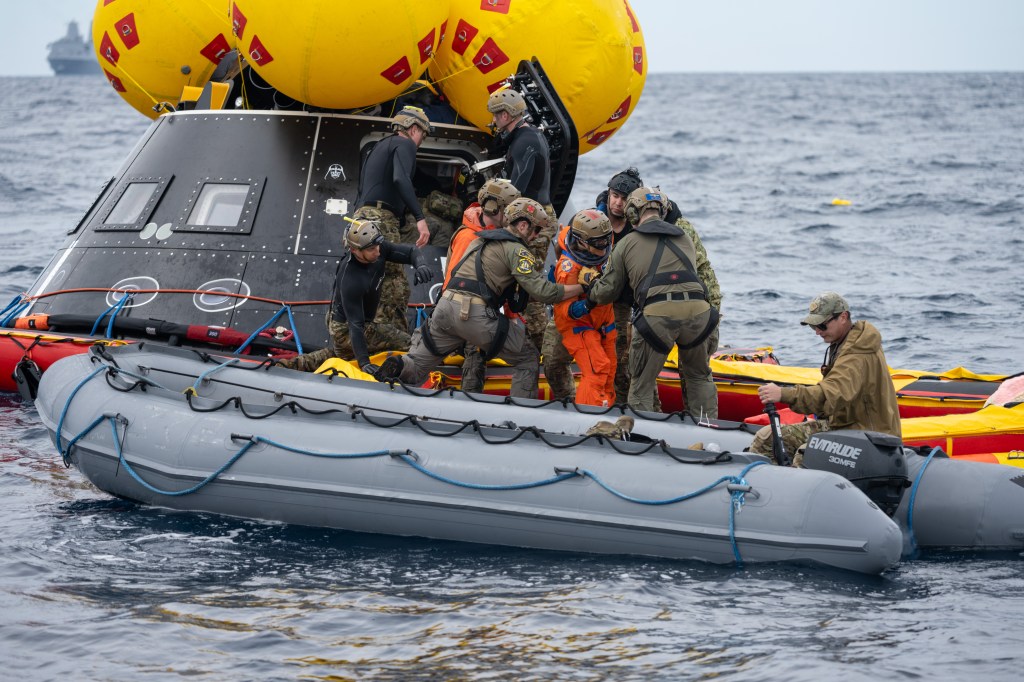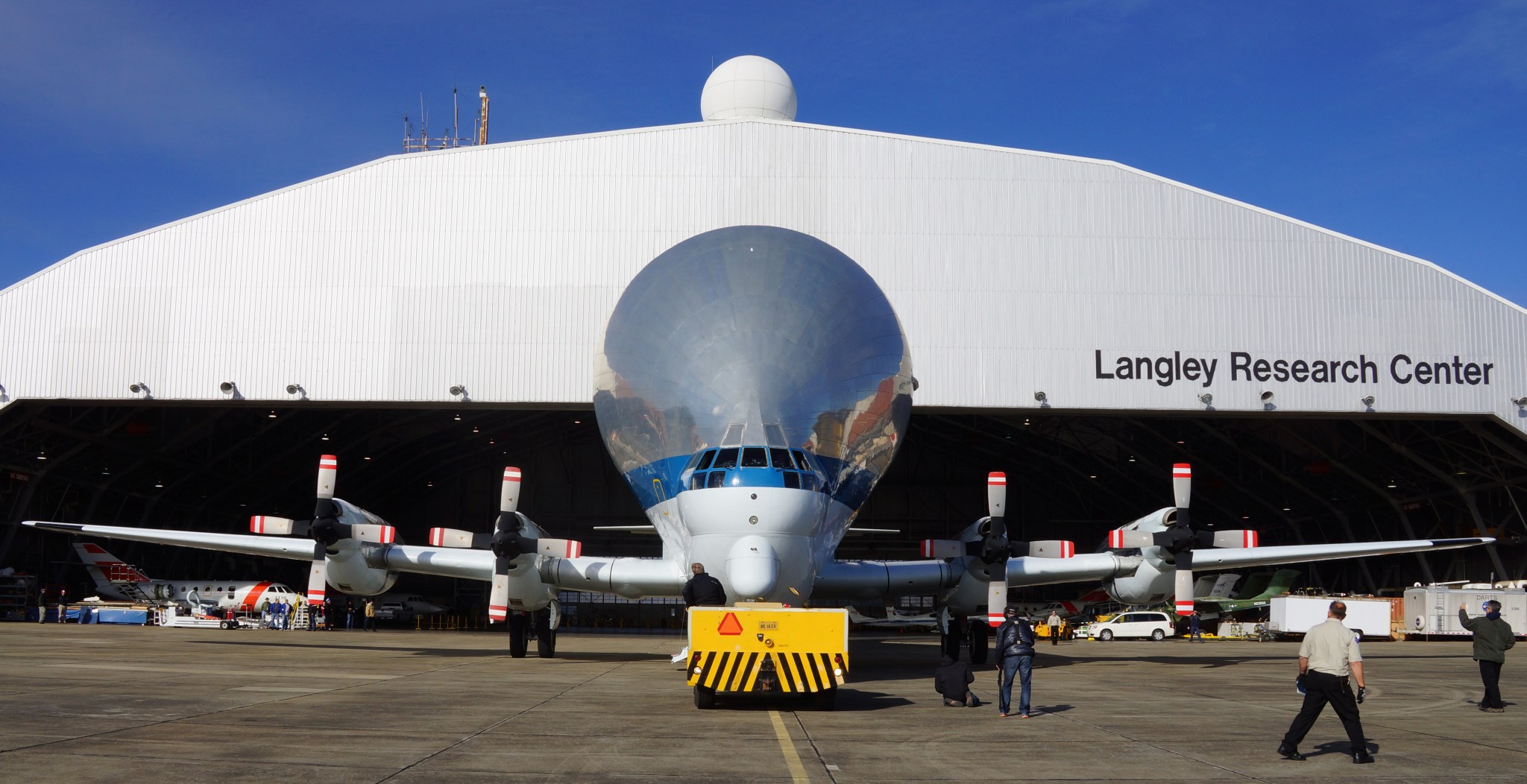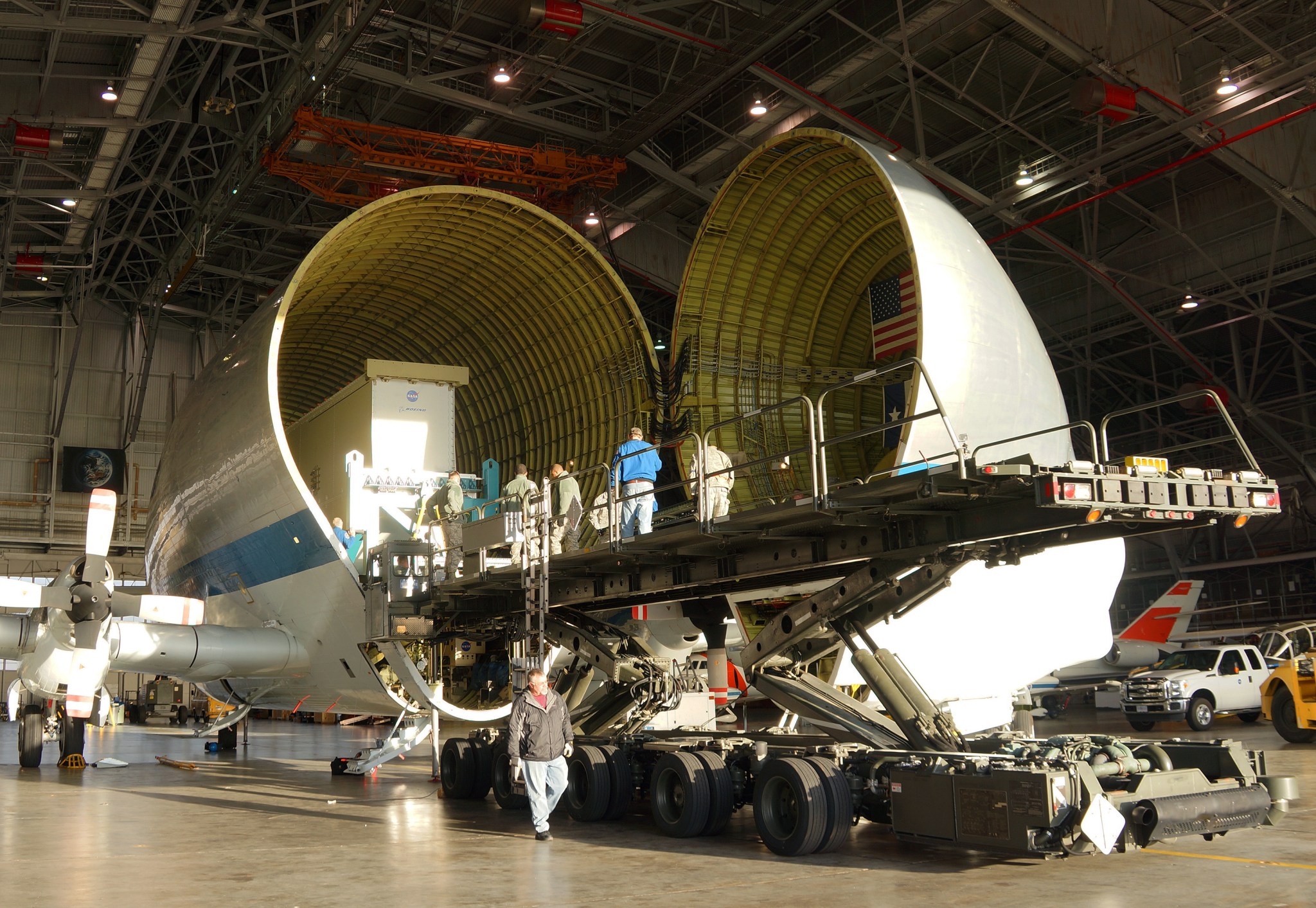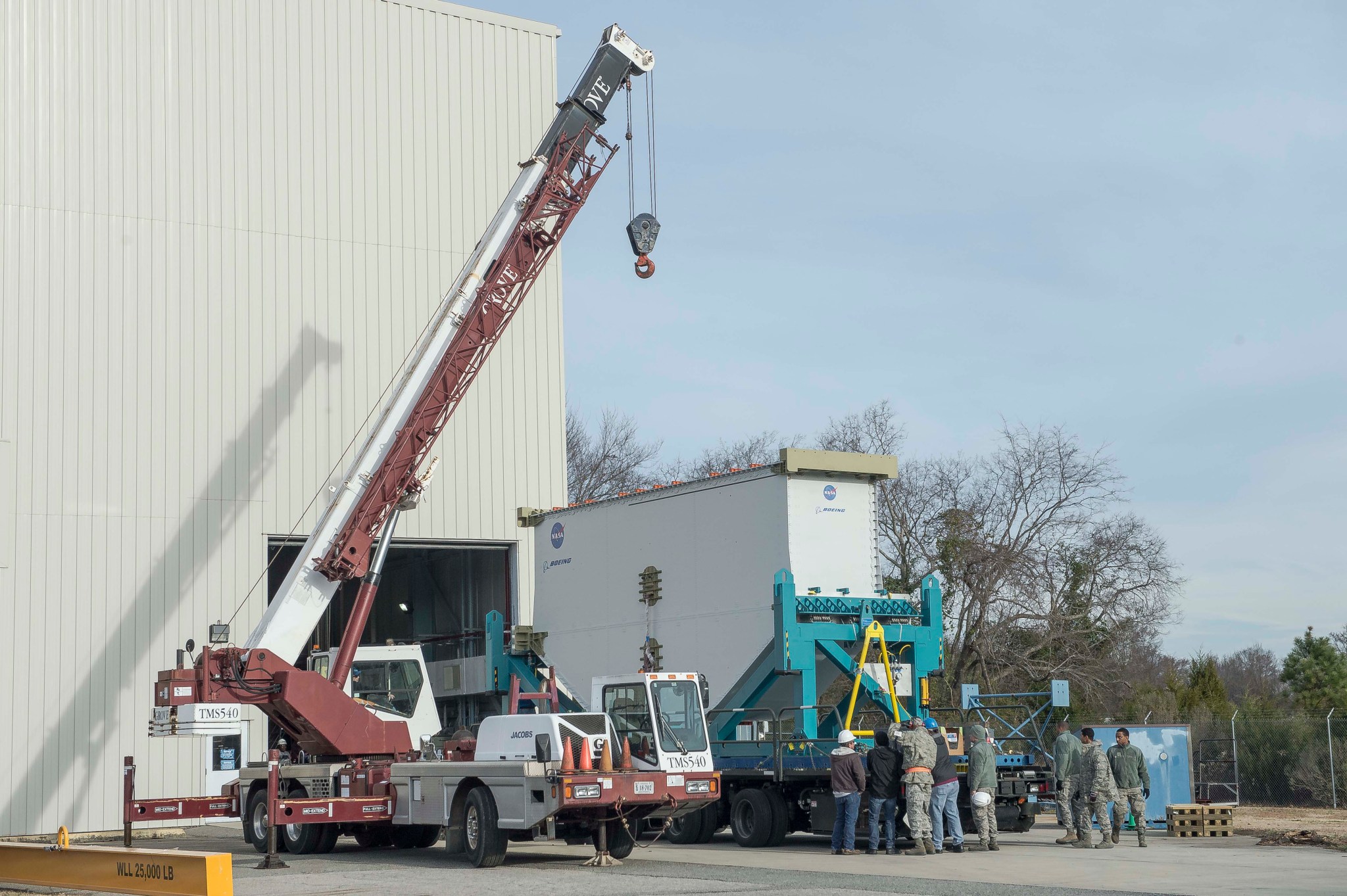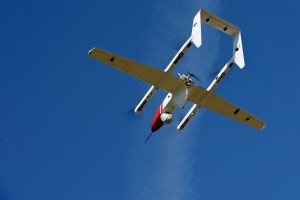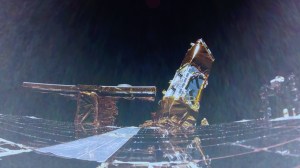A plane that looks more like a giant fish than an aircraft hauled a huge, uniquely shaped, fuselage cross-section across country for testing at NASA’s Langley Research Center in Hampton, Virginia.
The Super Guppy, which is based at NASA’s Johnson Space Center in Houston, carried the 30-foot (9.14 meters) wide, 10,000-pound (4,536 kilograms) composite, double deck multi-bay box from Long Beach, California, to Virginia so researchers can bend, pressurize and eventually break it. The multi-bay box is a test article that represents part of the center section of a futuristic airplane design, called a hybrid wing body.
Much of the test article is made out of a low-weight, damage-tolerant, stitched composite structural concept called Pultruded Rod Stitched Efficient Unitized Structure or PRSEUS. It was built for NASA’s Environmentally Responsible Aviation (ERA) project by Boeing Research & Technology in Huntington Beach, California, and assembled in Long Beach. The ERA project is part of NASA’s Aeronautics Research Mission Directorate.
“We chose to use the Super Guppy because it could easily accommodate the large structure, which is representative of a cross-section of a 75-percent scale futuristic hybrid wing body aircraft fuselage,” said Dawn Jegley, lead NASA engineer on the PRSEUS project. “The plane and its crew also have experience ferrying aircraft and spacecraft components.”
The Super Guppy, designated 377SG-201, has a cargo compartment that is 25 feet tall, 25 feet wide and 111 feet long (7.6 x 7.6 x 33.8 meters). It can carry a maximum payload of more than 26 tons (23,587 kg). The aircraft has a unique hinged nose that can open more than 200 degrees, allowing large pieces of cargo to be loaded and unloaded from the front. This is at least the fourth trip a Super Guppy has made to NASA Langley. Previous Guppy airplanes carried the Lunar Landing Training Vehicle in 1968, an XFV-12A vertical takeoff and landing aircraft prototype in 1977, and a component for the National Transonic Facility in 1979.
After the cargo carrier arrived at the NASA Langley hangar, a U.S. Air Force crew from the 633rd Logistics Readiness Squadron Squadron out of nearby Joint Base Langley-Eustis used a Tunner 60K aircraft cargo loader/transporter to remove the pallet carrying the multi-bay box from the Guppy’s cargo bay. Also supporting the delicately choreographed operation were Air Force reservists from the 71st Aerial Port Squadron, also based at Joint Base Langley-Eustis, but part of the 512th Airlift Wing headquartered at Dover Air Force Base in Delaware.
The Tunner, which looks a little like something out of the movie “Star Wars,” moved the large test article and pallet slowly about five blocks to NASA Langley’s Combined Loads Test System (COLTS) facility, under NASA Langley security police escort. A NASA Langley crane lifted the multi-bay box from the pallet and transferred it into COLTS. That is where next spring engineers will subject the article to extreme combined bending and pressure loads to assess its strength, and eventually take the large structure to failure.
NASA worked with The Boeing Company and the U.S. Air Force Research Laboratory (AFRL) to develop the PRSEUS concept, which consists of carbon-epoxy panels that are infused with resin and cured by vacuum pressure without having to use a size-restricting autoclave. That means components can be made in larger pieces.
“Another advantage to PRSEUS is that stitching the layers together allows aircraft manufacturers to use fewer fasteners – reducing cost, weight and the number of places where cracks can develop,” said Fay Collier, ERA project manager.
During manufacturing, after the layers are stitched, carbon-fiber rods are inserted to add stiffening. Researchers predict the stitched structural concept could result in a 25-percent reduction in weight over state-of-the-art aircraft composite applications.
Smaller stitched resin-infused composite pieces have been tested in labs at NASA Langley and used in smaller aircraft components, such as C-17 Globemaster III fairings and main landing gear doors. Boeing Research & Technology spent more than a year building the multi-bay box that will be the largest structure ever tested in COLTS.
The structural test is one of eight, large-scale integrated technology demonstrations designed to further the ERA project’s goals of simultaneous reduction in fuel consumption, noise levels and the emissions produced by tomorrow’s transport planes.
Author: Kathy Barnstorff, NASA Langley Research Center














